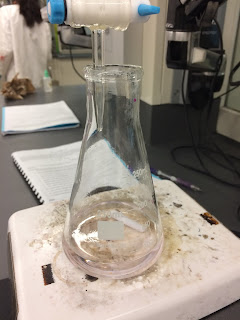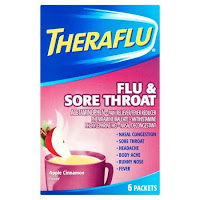During the Gas Law Lab my partner and I did a reaction between alka seltzer tablets and water. We had to take data about the mass of the alka seltzer powder we used, the circumference of the filled balloon, the volume of water that fits in the balloon, the room temperature, and the barometric pressure. The materials we had were a mortar, a pestle, 2 alka seltzer tablets, a 9-inch round balloon, a test tube, a piece of string, a ruler, a graduated cylinder, a barometer, and a thermometer.
We had to crush the alka seltzer tablets using the mortar and pestle, then weigh the crushed up tablets and pour them into a round balloon. We then filled up a test tube up to the top with water and put the balloon around the top of the test tube. To start the reaction, we flipped the balloon so the powder went into the water and started fizzing up and filling the balloon with gas. Once the reaction had ended, we were left with a full balloon of gas which we then measured the circumference of, with a piece of string and a ruler. We then used the data we had collected and Dalton's Law to find the mass of the CO₂ gas, the pressure of the gas, and the number of moles of CO₂ gas.
 |
| Picture of setup before the reaction |
 |
| Picture of the set up after the reaction |
Here is a picture of my data:
Here is a picture of my calculations:
Analysis Questions:
Discuss an area in this lab where experimental error may have occurred.
Experimental error may have occurred when we were measuring the amount of water the balloon could hold to fit our circumference because some of our water spilled out of the balloon into the sink when we were pouring it into the graduated cylinder. We also may have measured the circumference of the balloon too early when the reaction may have still been going on.
Choose one error from above and discuss if it would make 'n' the number of moles of CO₂ too big or too small.
If we had measured the circumference too early when the reaction was still going on, it would have made the moles of CO₂ gas too small because the reaction was still releasing gas into the balloon making the balloon bigger and able to hold more moles of CO₂ gas.
Filling the balloon with water may be one place where error could have occurred. Using the value for the circumference of the balloon in cm, calculate the volume of balloon mathematically.
Our circumference was measured to be 32.8 cm and using the circumference formula, we figured out that the radius was 5.22 cm. We then plugged that into the volume formula to calculate what our volume would be if we had done it mathematically. Here is the volume formula with our answer below.
5.22³ x (4/3)π 'Pi' = 596 cm³
Compare your answer to #3 of the volume obtained by filling the balloon with water. Is it close? Which do you feel is more accurate and why?
Our measured volume was
717.5 mL and our mathematically calculated volume was
596 mL (since cm³ = mL). Our values were not close and I felt that our mathematically calculated volume is more correct because we used the circumference we had measured ourselves when calculating it, and not had had to recreate the circumference using water in order to get the volume.
The ideal gas law technically applies to ideal gases. Give two differences between a real gas and an ideal gas. You may use your computer or book to research.
Some differences between real gases and ideal gases are that ideal gases have no attractive or repulsive forces between particles, while real gases have small attractive and repulsive forces between particles. Ideal gases also have particles with no volume while real gases have a small volume.
Would the CO₂ you collected in this lab be considered ideal? Why or why not?
The CO₂ we collected in this lab would not be considered ideal because it has attractive and repulsive forces in between the particles. It also has volume in between the particles of the gas. Since the gas exists in normal conditions it exhibits properties such as the ones above that classify it as a real gas.
Advanced Questions:
Using the information provided on the label, and stoichiometry, calculate the mass of CO₂ that sho7ld be collected per tablet.
What percent is the percent yield for the CO₂ collected in your sample?
CO₂ is water soluble. The solubility around room temperature is around 90 mL/100mL of water. What effect does this have on your calculated "n" value?
When we dissolved the Alka Seltzer tablets into the water, some of the CO₂ gas also may have dissolved into the water. This would have left us with less CO₂ gas and less CO₂ moles in the balloon so we would have a smaller "n" value.























 ]
]













